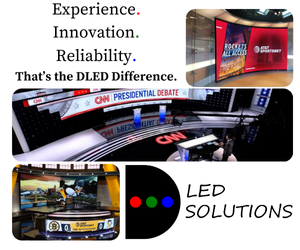Analysis: Navigating fragmentation, fatigue and the fight for loyalty in streaming

Subscribe to NCS for the latest news, project case studies and product announcements in broadcast technology, creative design and engineering delivered to your inbox.
The television landscape of 2024 bears little resemblance to the channel-flipping days of yesteryear. Today’s viewers face a labyrinth of streaming services, each promising must-see content and vying for a slice of the household entertainment budget.
As we delve into the latest industry data, it’s clear that the streaming revolution has hit a critical point, presenting a complex set of challenges and opportunities for both consumers and content providers.
Gone is the simple choice between cable and satellite. In its place, we find a fragmented market where the average viewer juggles multiple subscriptions, platform-hops for favorite shows and grapples with an overwhelming array of content options. This new reality is reshaping not just how we watch TV, but how the industry operates at its core.
Let’s start with the numbers.
The average viewer now consumes content from 7.4 different television sources, according to Hub Entertainment Research. This isn’t just channel surfing; it’s platform hopping on an unprecedented scale. We’ve become content nomads, roaming from one streaming service to another in search of our next binge-worthy show or must-see movie.
This fragmentation has led to what industry insiders call “churn,” the constant cycle of subscribing, canceling and resubscribing.
It’s a headache for providers and a drain on consumers’ time and wallets. Ampere Analysis reports that 42% of U.S. streaming subscribers are caught in this revolving door of subscriptions, cancelling not long after they first sign up. It’s no wonder that nearly three-quarters of consumers are clamoring for a service that could manage multiple subscriptions in one place.
But here’s where it gets interesting: The very complexity that frustrates viewers is driving innovation in the industry.
Enter subscription bundles. These are not the cable bundles of old, mind you, but new, flexible packages designed for the streaming age. For instance, Disney’s trio of Disney+, Hulu and ESPN+ has shown promising results, with bundled subscribers 59% less likely to cancel within a year compared to those with Disney+ alone.
This bundling strategy isn’t just about convenience; it’s a lifeline for streaming services in a sea of competition. According to Antenna data, with over 50 million new subscriptions and an equal number of cancellations in recent quarters, the fight for viewer loyalty has never been fiercer.
However, bundles are just one aspect of these shifting seas. The rise of ad-supported tiers is another trend reshaping the industry. More than half of new subscribers in late 2023 and early 2024 opted for ad-supported plans. This suggests a growing acceptance of advertisements in exchange for lower costs, a compromise that seemed unthinkable in the early days of ad-free streaming.
But let’s not forget the elephant in the room: content.
In the race to attract and retain subscribers, streaming services are betting big on exclusive shows and movies. Hub Entertainment Research’s findings are telling: access to theatrical releases and original content rank just as high as price in consumers’ minds. The message is clear. Content is still king, even in an era of cost-consciousness.
This brings us to the resurgence of linear TV in a non-traditional form.
Free ad-supported streaming television (FAST) channels are growing, with their users spending an average of 1 hour and 40 minutes per evening on these platforms. It’s a testament to the enduring appeal of the lean-back, channel-surfing experience, now adapted for the streaming age.
The FAST phenomenon also challenges assumptions about streaming audiences. Far from being a last resort for those who can’t afford paid subscriptions, FAST services are attracting a wide viewership. They’re particularly popular among younger, more diverse audiences, with 58% of FAST viewers aged between 18 and 44.
As we look to the future, it’s clear that the streaming industry is at an inflection point. The initial land grab for subscribers has given way to a more nuanced battle for viewer engagement and loyalty. Future success will require a delicate balance of content investment, pricing strategy and user experience.
For consumers, the challenge is navigating this complex landscape without succumbing to subscription fatigue. The average household spends $82 a month on TV content, dangerously close to their stated maximum of $87. Something has to give, and we’ll likely see a shakeout in the coming years as viewers rethink their subscriptions and as consolidation and bundling reshape the media landscape.
The data shows that ad-free tiers, while more expensive, foster greater loyalty. Yet the growth in ad-supported subscriptions suggests a market for more affordable options.
Moreover, the continuing shift towards streaming-only viewing, with 58% of smart TVs used exclusively for streaming, according to Vizio’s Inscape, makes clear that there is still some room for growth.
As we stand at this crossroads, one thing is clear: The future of television will be shaped by how well streaming services can adapt to changing viewer habits and preferences. The winners in this new landscape will be those who can offer compelling content, flexible pricing and a seamless user experience across multiple platforms.
The streaming revolution promised us choice, convenience and control. In many ways, it has delivered on that promise. But it has also created new challenges and complexities.
As we move forward, the industry must find ways to simplify the viewing experience without sacrificing the diversity of content that makes the streaming era so exciting. For viewers, the coming years will require savvy navigation of an increasingly complex media landscape. But for those willing to adapt, the rewards are substantial: a world of content at our fingertips, more flexible than ever before.
Subscribe to NCS for the latest news, project case studies and product announcements in broadcast technology, creative design and engineering delivered to your inbox.






tags
Advertising-based Video on Demand, Free Ad-Supported Streaming Television (FAST), Streaming OTT
categories
Heroes, Streaming, Thought Leadership, Voices